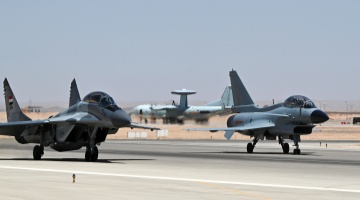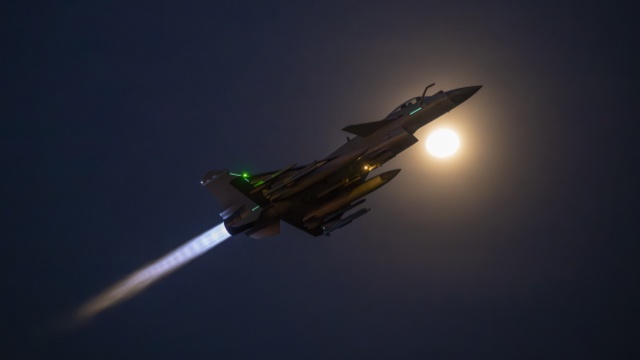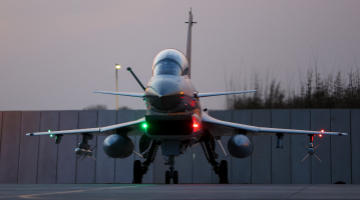By Hu Qianrong
The scrambled withdrawal of American troops from Afghanistan ordered by US President Biden in August 2021 wrapped up the 20-year-long war that had cost the US more than USD 2 trillion. With this, the US adjusted its budgetary system and canceled the separate allocation for Overseas Contingency Operations (OCO). However, the amount of US defense expenditure didn’t shrink with the end of the war in Afghanistan, neither did the peace dividend promised by President Biden become a reality.
President Biden recently signed the National Defense Authorization Act for Fiscal Year 2022, which, standing at USD 768.2 billion in total, once again pushed America’s military expenditure to a new high. Of the total budget, USD 740 billion will be spent on national defense projects, USD 27.8 billion on nuclear weapons projects, and USD 378 million on other activities related to national defense.
During FY2021 when Trump was in office, the Department of Defense (DoD) received USD 703.7 billion. The Biden administration’s first defense budget lifted the allocation for DoD by USD 36.3 billion, with the overall budget expanded by over 5%.
In the US, the sum of the national defense budget is both a strategic issue and an economic issue as well as a tool in bipartisan politics. The spike in the budget in FY2022 is the result of the joint efforts of multiple factors.
On the strategic level, the US is straining itself to maintain the so-called competitive edge as it cannot allow its military expenditure to contract. The additional USD 25 billion in FY2022 NDAA was specifically allocated to deal with the “strategic competition” between the US and China. A foreseeable trend is that during Biden’s term, Washington is sure to increase its military projection around China and in the Indo-Pacific region. The 2021 Global Posture Review released by the DoD called for the US to intensify deployments in the Indo-Pacific and consolidate the coordination with allies to jointly fend off potential military operations by China, even at the expense of America’s military presence in other regions. The FY2022 NDAA spent a long part elaborating on America’s future Indo-Pacific deployments. To deter China, the president proposed to allocate USD 5.1 billion to the Pacific Deterrence Initiative, to which Congress added another USD 2 billion.
On the economic level, the rapid inflation in the US set an important stage for the rising military budget. Since 2021, the US has seen the biggest jump in its CPI over 30-plus years, which put heavy upward pressure on the remuneration for military personnel and on the price of weapons. If the upper limit for defense expenditure is not lifted, the DoD will find it hard to pay its employees and weapon and equipment contractors at the same time. On the one hand, the Pentagon claimed that the remuneration and benefits for the military must increase higher than inflation and promised a 2.7% pay raise for both serving and retired servicemembers. The US Department of Labor also said the payroll for retired military personnel must rise by 4.6% in FY2023. On the other hand, the mounting inflation rate bloated contractors’ expectations for the cost of their weapon contracts. Although the negative effects of inflation on military projects won’t come to the fore immediately, it will reach the price of weapons sooner or later if not effectively controlled.
On the political level, the NDAA is a result of the Democratic and Republican parties’ bargaining and is related to the resolution on lifting the debt cap. The two parties were discussing whether to link the debt cap with NDAA in early December. For one thing, raising the debt cap was the Republicans’ political weapon as they are not sufficiently motivated to facilitate a vote on the matter. For another, the Democrats are loath to support the NDAA for it allocates a lion’s share to the DoD. In the end, both the resolutions on raising the debt cap and increasing the military budget were passed before the year 2022 began. As soon as Biden lifted the government’s debt cap to USD 2.5 trillion, the quandary for military expenses was resolved, which made the two motions of such great significance look like a political game – the Republicans making concessions to the Democrats on the debt issue and the other way around on the military budget issue.
In sum, despite the high-sounding slogan of “deterring China” and that part of the incremental budget is indeed intended to contain China, the FY2022 NDAA is essentially aimed to guarantee the interests of American servicemembers and defense contractors.
(The author is an assistant researcher at the Chongyang Institute for Financial Studies, Renmin University)
Editor's note: This article is originally published on china.com.cn, and is translated from Chinese into English and edited by the China Military Online. The information, ideas or opinions appearing in this article do not necessarily reflect the views of eng.chinamil.com.cn.









